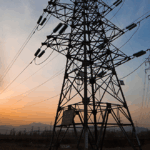
Across Ghana’s diverse agricultural landscapes, from the fertile Volta lowlands in the east to the expansive savannas of the Northern Region, the rolling hills of Ashanti, and the coastal plains of Central, a profound paradox grips the nation’s rice farmers. Warehouses nationwide bulge with unsold locally produced rice from the 2024 minor and 2025 major seasons, even as planting for the 2025 minor season begins under uncertain skies. This crisis, well documented by the media, civil society, farmers, and amplified by the Peasant Farmers Association, reveals deep-seated vulnerabilities in Ghana’s rice sector.
Rice, a dietary staple and economic pillar contributing about 15% to Ghana’s Gross Domestic Product (GDP) while employing over 597,500 people along the value chain, sees the country importing one million metric tonnes (MT) in the 2025/26 marketing year, at an estimated cost of $425 to $500 million (extrapolated from 2023’s $342 million for 800,000 MT, per data from the Observatory of Economic Complexity (OEC)). This reliance drains foreign reserves and traps local producers in poverty, despite production spanning all 16 regions of the country.
According to the U.S. Department of Agriculture’s (USDA) 2025 Grain and Feed Annual Report, Ghana’s domestic milled rice production reached 900,000 MT in the 2025/26 period, up 18% from previous years, yet consumption surged to 1.8 million MT, up from 1.75 million MT, driven by a per capita intake of 51.0 kg per annum from 45.0 kg per annum in 2020 among a population of 34.6 million people (i.e., rice consumption is driven by population growth, urbanization, and changing dietary preferences).
This leaves a self-sufficiency ratio hovering around 50%, far from the National Rice Development Strategy’s (NRDS) ambitious target of 72% by 2025, a goal now extended amid ongoing challenges. This situation calls for an immediate ban on foreign rice imports to shield local farmers and the establishment of a National Rice Board to orchestrate sustainable growth. These measures are imperative for economic resilience, job creation, and food sovereignty. As Chamber of Agribusiness Ghana’s (CAG) declaration of an “agricultural emergency” warns of 1.2 million MT unsold grains (rice, maize, and soya) nationwide, the time for half-measures is over. Ghana’s rice future must be homegrown.
The State of Ghana’s Rice Sector: A Legacy of Underachievement
Ghana’s rice sector, despite decades of policy interventions, remains plagued by structural inefficiencies and unfulfilled potential, leading to persistent underperformance. As of 2025, paddy production stands at approximately 1.4 million MT (equivalent to 900,000 MT milled) due to favourable weather and improved farmer participation (especially by professionals who engage in large-scale (commercial) farming as a business), according to USDA forecasts, reflecting an 18% growth from 2024. This output spans all sixteen regions, with the five main producing regions being Northern, Volta, Upper East, Oti, and Ashanti.
The Volta Region, with 44% mechanisation and irrigation, records Ghana’s highest rice productivity at 5.11 Mt/ha and 39% of total production, despite cultivating only 23% of the area. The Northern Region follows with 21% of output but the lowest yield (2.01 Mt/ha), driven by its larger farmland, favourable conditions, and reliance on traditional smallholder farming. In fact, the Northern, Volta, and Upper East Regions contribute more than 87% of the overall national output. Historical policies from Dr Kwame Nkrumah’s 1960s plans to the 2009 Ghana National Rice Development Strategy (NRDS I) and 2017 Planting for Food and Jobs, and the current 2025 Feed Ghana Programme have aimed at self-sufficiency, yet progress is uneven.
The Ministry of Food and Agriculture (MoFA) received GH¢1.5 billion under Ghana’s 2025 national budget to support agricultural development. Ghana’s rice sector faces high machinery costs, inadequate mechanisation services, poor land development, weak operator skills, limited drying and milling facilities, weak local equipment fabrication, costly and poorly maintained irrigation systems, bad rural roads, insufficient storage, and low public investment, all resulting in low productivity, high post-harvest losses, poor grain quality, and low income.
The Economic and Social Toll of Unchecked Imports
Unchecked rice imports inflict severe economic and social damage on Ghana, draining resources while eroding local livelihoods. In 2025/26, imports hit 1 million MT, valued at approximately USD425 to 500 million, covering over half of the 1.8 million MT consumption. This bill exacerbates forex shortages, with imports from Vietnam (USD 236.45 million in 2023) and others fuelling a trade deficit amid cedi depreciation. Worryingly, Ghana became Vietnam’s largest rice buyer in September 2025, accounting for nearly 22% of total Vietnam rice exports after the Philippines temporarily suspended imports from Vietnam. Following Ghana, Côte d’Ivoire and Malaysia were the second- and third-largest importers of Vietnamese rice, with market shares of over 21% and nearly 10%, respectively.
On prices, the USDA observed that between March 2024 and January 2025, the average price of a 100kg bag of rice increased from GH¢200 to GH¢650, a 225 per cent jump. Although prices eased to GH¢400 by March 2025, they remained twice as high as a year earlier. Import pricing dynamics also favour foreign suppliers. As of early 2025, a 25kg bag of Thai fragrant rice averaged GH¢690, Vietnamese rice sold at GH¢490, while local long-grain rice was priced at GH¢535, the report stated. With 70 per cent of rice sold in Ghana imported largely from Vietnam, India, and Thailand, local producers struggle to compete on cost and quality.
Beyond price fluctuations, local rice production faces significant challenges, including inadequate irrigation infrastructure, high input costs, low mechanisation, and limited processing capacity. These structural issues hinder domestic producers’ ability to compete with imported rice, which is often preferred by urban consumers for its perceived quality and affordability. Economically, imports undermine domestic production. The rice glut means farmers are unable to repay loans or replant. MoFA’s 2025 goal of achieving 2,059,377 MT of paddy production and 72% self-sufficiency by the end of 2025 and achieving 3,023,114 MT of paddy production and 99.7% of self-sufficiency by the end of 2027 falters as cheap imports flood markets.
Socially, the toll is profound; an approximate total of 597,500 households are involved in the rice cultivation/value chain, yet gluts threaten jobs, livelihoods, and welfare. Women, who constitute a significant portion of the rice sector workforce, bear disproportionate burdens, juggling farming and household responsibilities amid losses. Youth disinterest perpetuates rural poverty; CAG warns of destabilised value chains. The nutritional value of local rice, rich in fibre and antioxidants, helps combat diabetes and promotes better health. Yet, imported rice continues to dominate urban diets, accounting for nearly 70% of consumption. This unchecked dependence on imports increases both nutritional and economic vulnerability. Banning imports, as CAG proposes (three-month moratorium, quotas), could save $500M annually, fostering self-sufficiency and resilience.
Establishing a National Rice Board: A Blueprint for Success
To harness Ghana’s rice potential, a National Rice Board (NRB) is essential, a centralised body akin to COCOBOD or GoldBod, which elevated cocoa and gold to global prominence. Modelled on successful boards, the NRB would regulate, innovate, and sustain the sector, addressing 2025’s 50% self-sufficiency gap.
Core Functions:
- Regulation and Quality Assurance: The NRB will strengthen regulation and quality control across the rice value chain by enforcing national standards for milling, grading, and packaging to match or exceed import quality. It will also tackle post-harvest losses, currently estimated at 20–30%, through investments in modern silos, dryers, and milling facilities. Building on the MoFA–the United Nations Industrial Development Organisation (UNIDO) 2020 quality enhancement project, the NRB will scale these interventions nationwide to ensure consistency, competitiveness, and consumer confidence in Ghana’s rice.
- Research and Innovation: In collaboration with the Council for Scientific and Industrial Research (CSIR) and the Savanna Agricultural Research Institute (SARI), the NRB will advance research on high-yielding, aromatic, and climate-resilient rice varieties capable of producing 6–8 MT/ha. Research and innovation will promote sustainable agronomic practices such as Alternate Wetting and Drying (AWD), which reduces water use by 20–30%. Targeted funding will support biotechnology research to overcome any perceived limitations of current local varieties, driving productivity and global competitiveness.
- Farmer Empowerment: The NRB will enhance access to mechanisation and irrigation, increasing the irrigated area beyond the current 41,553.6 hectares, which accounts for 16% of the total 259,710 hectares of rice land under cultivation. This intervention will reduce reliance on rain-fed lowlands, currently 202,573.8 hectares (78%) and rain-fed uplands 155,582.6 hectares (6%) while expanding rice production across other suitable lowland and upland areas.
- Rice Price Stabilisation: NRB must establish and manage a Grain Stabilisation Fund, and overseen by the Controller and Accountant General (CAG), farmers will be assured of fair pricing and market stability. This mechanism will prevent market gluts such as those experienced in 2025 and promote equitable income distribution among smallholders.
- Marketing and Exports: The NRB will implement a national marketing campaign emphasising the nutritional and health benefits of locally produced rice, such as brown rice’s role in diabetes management. Domestic demand will be bolstered through linkages with the School Feeding Programme and the National Food Buffer Stock Company (NAFCO), which will absorb surplus production. Concurrently, structured export channels will target markets in Burkina Faso, Côte d’Ivoire, Liberia, Democratic Republic of Congo and other neighbouring countries, leveraging the African Continental Free Trade Area (AfCFTA) to expand markets, strengthen regional integration, and diversify income streams for farmers and producers within the rice value chain.
- Rice Purchase Legislation: To further bolster demand and ensure a stable market for local producers, the government must legislate mandates requiring schools, prisons, and other governmental agencies to prioritise and purchase exclusively from local rice suppliers. This policy would create a guaranteed off-take mechanism, absorbing surplus production, supporting smallholder farmers, and injecting immediate economic stimulus into rural communities, potentially diverting up to 200,000 MT annually from gluts to public institutions.
- Monitoring and Data: A robust monitoring and evaluation framework will track production trends across districts, for example, comparing Volta’s 5.11 MT/ha with the Northern Region’s 2.01 MT/ha and update projections annually. The NRB will integrate AGRA’s mechanisation insights and digital data systems to guide investment decisions, identify performance gaps, and ensure targeted interventions where productivity remains low.
Conclusion: A Bold Path Forward
Ghana stands at a critical crossroads in its pursuit of agricultural sovereignty and economic resilience. The continued reliance on imported rice has become both a financial drain and a moral contradiction undermining the very farmers who feed the nation. With 70% of domestic demand met through imports, Ghana forfeits not only USD 425 to 500 million annually in foreign exchange but also the livelihoods, dignity, and future of its farmers. The evidence is clear: the cost of inaction now far outweighs the political and logistical challenges of reform. Banning rice imports, coupled with the establishment of a National Rice Board (NRB), represents not a protectionist impulse but a strategic assertion of national interest. The NRB provides the institutional backbone to coordinate quality control, innovation, and market regulation elements that have long eluded fragmented interventions. By integrating the strengths of research institutions, farmer associations, and private sector actors, Ghana can finally align policy intent with production outcomes. This is the moment to act decisively. Through deliberate investment, strong legislation, and data-driven monitoring, Ghana can achieve rice self-sufficiency by 2027, saving over $500 million annually and creating millions of jobs. The transformation from dependency to prosperity begins with one bold policy shift: ban rice imports and establish and empower the National Rice Board to lead Ghana’s journey toward food security, industrial growth, and national pride.
*******
Julius Karl D. Fieve is an innovative Gender and Development Finance Expert with over 12 years of experience driving impactful initiatives across Africa. He is also a rice farmer, cultivating over 200 acres of rice in the Central Tongu District of the Volta Region. Julius holds master’s degrees-an MSc in Africa and International Development from the University of Edinburgh, UK, an MSc in Economics and BSc. Actuarial Science, both from the Kwame Nkrumah University of Science and Technology (KNUST).




